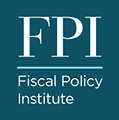Recent Work
New Data Confirm Tax Flight Is A Myth
New York State often faces calls for higher tax revenue, whether due to concerns over revenue shortfalls or a desire to increase public spending. This brief assesses the soundness of raising revenue through the Personal Income Tax, examining the fiscal stability of such revenue, fundamental fairness considerations, and responses to common arguments against raising the state income tax.
Making Sense of Federal Funding Cuts in New York
A Q&A about federal funding cuts
FPI Briefing on the Federal Budget Reconciliation Bill
The OBBBA spending cuts are concentrated in Medicaid and food stamps (SNAP), with devastating effects for New Yorkers. The bill will cut federal funding to the New York State budget by approximately $10 billion annually and kick 1.5 million New Yorkers off their health insurance, more than doubling the statewide uninsured population. On top of the direct fiscal costs to New York State, the OBBBA will cut an additional $13 billion in funding to New York’s healthcare system.
New York Hospitals will Close under the “One Big Beautiful Bill Act”
70 of New York's 156 hospitals are at risk of closure from federal Medicaid cuts
Fact Sheet: SNAP Cuts in New York
3.5 million New Yorkers – 18 percent of the state population – depend on SNAP benefits, which average $209 per month for a participant (about $2,500 per year). The OBBBA would threaten SNAP benefits for over 1 million New Yorkers, including 363,000 children.
New York Employment Impacts from Medicaid Cuts
A reduction of $10 billion in federal Medicaid funding would result in the direct loss of over 78,000 jobs in healthcare across the state and over 136,000 additional jobs lost through economic spillovers.
Has New York Already Entered Stagflation?
Stagflation is the deadly combination of low growth and high inflation. With the implementation of sweeping and high tariffs by the federal government, most economists and forecasters currently predict something resembling “stagflation” on the Unites States’ economic horizon. But New York may have already entered a period of stagflation: New York’s economy has recovered the jobs lost during the Covid-19 pandemic, but lags the economic growth seen in the rest of the country.
Preventing a NYCHA Budget Crisis
The New York City Housing Authority (NYCHA) houses over 500,000 New Yorkers and receives a majority of its funding from the federal government, leaving it especially at risk of impending federal budget cuts. New York State must be prepared to fill gaps in both the operating funding and capital funding for NYCHA.
The Urgent Need to Raise Unemployment Benefits
Unemployment insurance stabilizes the state economy during economic downturns, but New York’s UI system has been insolvent for decades and UI benefits are inadequate to keep workers out of poverty.
Fixing Unemployment Insurance
Download the Memo Download the Report The Fiscal Policy Institute today released two publications on how to fix New York State's insolvent unemployment insurance system: a memo recommending tax changes, and a short report detailing the UI system’s chronic underfunding and low benefit level. Unemployment insurance (UI), which provides temporary income to laid-off workers, is one of the State’s most important economic stabilization policies. Unemployment can both throw workers into poverty and exacerbate recessions by driving down demand; UI counteracts these risks and can soften the blow of an economic [...]
Fact Sheet: New York State’s Economy
Population growth, widening inequality, and cost-of-living strains
How Does the Inflation Rebate Stack Up?
The proposed “inflation rebate” will not offset NY’s cost-of-living squeeze
What to Expect in the Budget: Housing Policy
The fiscal year 2026 budget cycle is upon us and “affordability” is taking center stage. The mandate to address the rapidly rising cost-of-living in New York has never been more urgent, with consumer prices up about 20 percent since 2020. The cost of housing, in particular, has skyrocketed in the years since the Covid-19 pandemic, with home prices up over 50 percent—making housing costs the number one priority for addressing affordability in New York.
Governor Hochul’s Affordability Policy Report Card
Governor Hochul’s State of the State address made clear that “affordability” is her top priority this session. As part of her agenda, Governor Hochul and her team have put forward a set of policies intended to “put money back in New Yorkers’ pockets.” The four major proposals include a tax cut, an “inflation rebate payment,” an expansion of the child tax credit, and fully funding free school lunches for all public-school students in the State.
New Census Data Show Population Growth as well as Continuing Affordability Challenges
Census data released last month show that New York’s population growth has returned to pre-Covid patterns, characterized by both overall population growth and affordability pressure driving many working and middle-income New Yorkers to leave the state.
